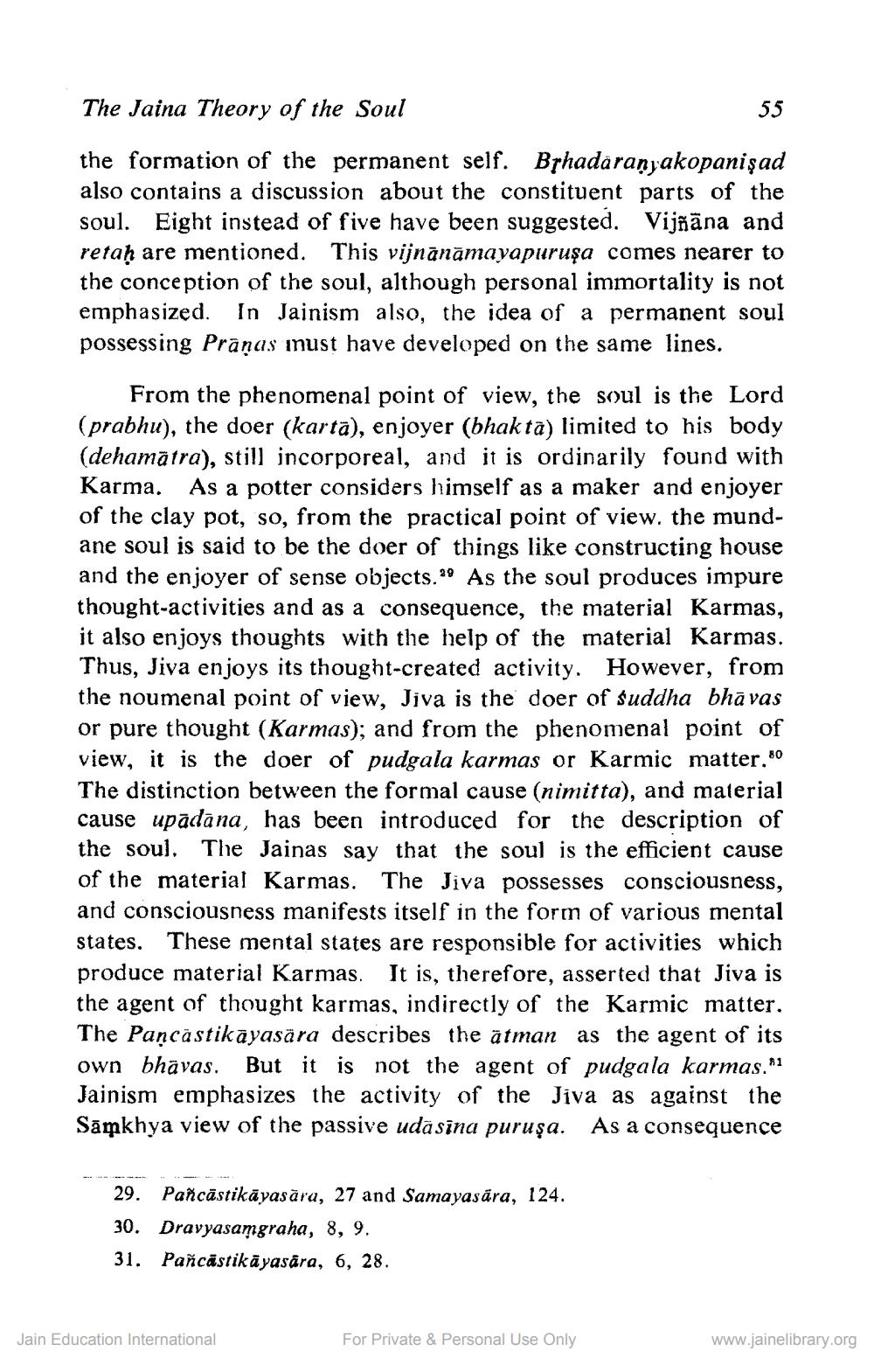________________
The Jaina Theory of the Soul
55
the formation of the permanent self. Brhadaranyakopanişad also contains a discussion about the constituent parts of the soul. Eight instead of five have been suggested. Vijñāna and retaḥ are mentioned. This vijnanāmayapuruşa comes nearer to the conception of the soul, although personal immortality is not emphasized. In Jainism also, the idea of a permanent soul possessing Pranas must have developed on the same lines.
From the phenomenal point of view, the soul is the Lord (prabhu), the doer (karta), enjoyer (bhakta) limited to his body (dehamatra), still incorporeal, and it is ordinarily found with Karma. As a potter considers himself as a maker and enjoyer of the clay pot, so, from the practical point of view. the mundane soul is said to be the doer of things like constructing house and the enjoyer of sense objects.a9 As the soul produces impure thought-activities and as a consequence, the material Karmas, it also enjoys thoughts with the help of the material Karmas. Thus, Jiva enjoys its thought-created activity. However, from the noumenal point of view, Jiva is the doer of suddha bhāvas or pure thought (Karmas); and from the phenomenal point of view, it is the doer of pudgala karmas or Karmic matter. 80 The distinction between the formal cause (nimitta), and material cause upādana, has been introduced for the description of the soul. The Jainas say that the soul is the efficient cause of the material Karmas. The Jiva possesses consciousness, and consciousness manifests itself in the form of various mental states. These mental states are responsible for activities which produce material Karmas. It is, therefore, asserted that Jiva is the agent of thought karmas, indirectly of the Karmic matter. The Paņcastikāyasära describes the ātman as the agent of its own bhavas. But it is not the agent of pudgala karmas.*! Jainism emphasizes the activity of the Jiva as against the Sāmkhya view of the passive uda sina puruşa. As a consequence
29. Pancāstikāyasara, 27 and Samayasära, 124. 30. Dravyasamgraha, 8, 9. 31. Pancastikāyasära, 6, 28.
Jain Education International
For Private & Personal Use Only
www.jainelibrary.org




